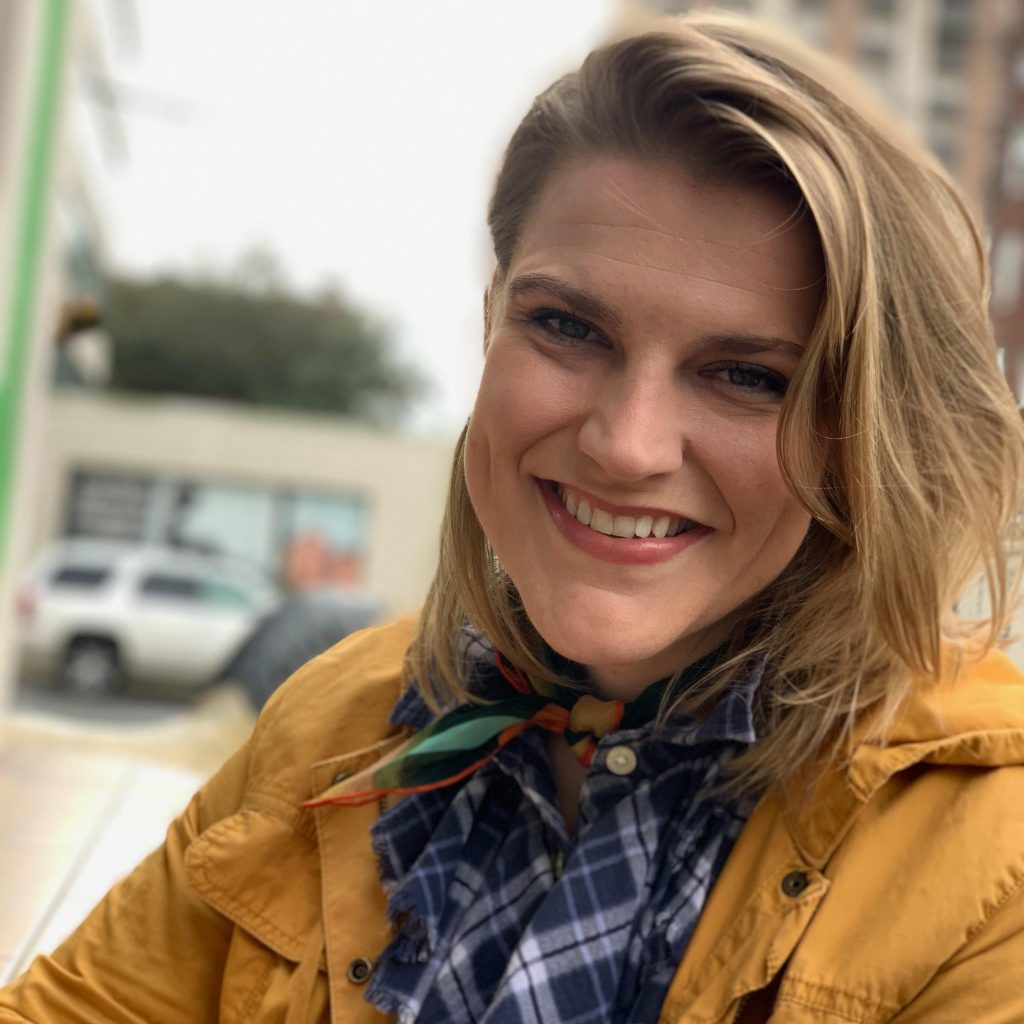
Amanda Reed | Washington, DC
Amanda (she/her) recently moved into her apartment in Washington, DC across the street from Smithsonian National Zoological Park. She lives alone, hasn’t made many friends, and her whole family lives far away. She finds unexpected comfort in the company of her new neighbors, the captive lions. Their regular roars remind her to use this time to tap into her calling.

Story Transcript:
I live in a pocket of Northwest Washington, DC situated so close to Smithsonian National Zoological Park, I can hear African lions roar from my apartment.
The sound is low and enormous and disarming. It booms and arcs, sending vibrations for miles. There’s nothing like it. Even the familiar, on-screen yawp of the MGM cat, keeper of the cinephile kingdom, pales in comparison.
To say I didn’t fully appreciate this primal, backyard symphony before the onset of coronavirus would be wholly inaccurate. It served as more of an exotic fun fact — an antidote to banal small talk and a special morsel I had in common with my literary heroine Nora Ephron. (She wrote about the lions, too, when she lived in Northwest DC while married to famed journalist Carl Bernstein.)
“I would stare out the window of my Washington apartment, which had a commanding view of the lions at the National Zoo. The lions at the National Zoo! Oh, the metaphors of captivity that leaped to mind!”
I don’t aim to draw the “captivity” parallel, however. Too on the snout.
I’m simply here to pay homage to my maned neighbors for their daily concerts.
Prior to the mid-March stay-at-home order, I knew them to sound their calls before sunrise and sunset, when they’re most active. I never once paused to ponder the pride’s lunch plans or midday musings. I wasn’t at home during those stretches of the day. I couldn’t hear their throaty tunes while out in the world.
Then, on a morning in early April — somewhere between Zoom meetings and couch cushions — those roars rolled in on the hour, every hour. By day’s end I was as tamed as Pavlov’s dog and waiting by the window, neck craned in anticipation.
So far I’ve refrained from roaring back, though the instinct — and pent-up emotion — is certainly there. I fear any attempt at call-and-response might seem too similar to the shrillness of the smoke detector. (My human neighbors have heard this sound one too many times since I moved in last December, I’m afraid.)
Thanks to Smithsonian’s always-live “Lion Cam,” I’m learning to better train my ear. Living-room and Google-Chrome-browser windows open and suddenly Luke (14 years), Naba (15 years), Shera (14 years), and Amahle (5 years) are on the prowl in front of my coffee table.
These self-imposed lessons in zoology have duly reminded me of a theme I often return to when things get hard: to really know something is to be with it, to try and understand it. To tame it and be tamed by it. Who’s roaring about what, and why. Hungry? Frisky? A tad territorial? I now know such deep and distinct vocals are capable of busting up family squabbles and asserting strength; signaling warning and frustration, hunger and lust. We’re all social beasts struggling to communicate something, it turns out.
Springtime amid this new reality is long and unnerving and eerily bright. What’s ahead will be, too. But, tomorrow, as the mid-afternoon sun cuts through Rock Creek Park’s winding tree line, the lions will roar with me.
